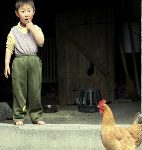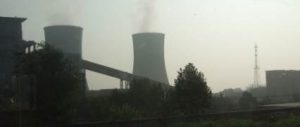Water scarcity affects 184,000 square kilometres (276 million mu)of farmland in northern China, as the worst drought for half a century grips the region. It has put food security back on the agenda, and revealed a lack of investment in agricultural land. The drought has also triggered discussion about new crops that can cope with these conditions. Monsanto, the multinational agricultural biotechnology firm, recently announced plans to market a drought-tolerant strain of maize earlier than expected, after four years of development. Irrigation will provide inadequate water for China’s fields, say some experts. The cultivation of drought-tolerant crops seems important.
But are genetically-modified crops the best way to improve harvests? Aside from food safety issues, they may not be a good idea. The factors that affect Chinese food security are the area farmed, and the yield per unit of area. Yield is more affected by the quality of the land than the nature of the crop. Without a major increase in yield, decreases in the amount of land that is farmed or a shortening in the growing season result in decreased harvests. GM technology only has a role to play where fertilisers, pesticides and herbicides are used heavily. All of these technologies replace labour: people do less work, the soil becomes less fertile and pollution worsens. In the long term, the key factor in food production – soil fertility – is not improved but diminished. As the GM industry overwhelms agriculture, farmers will have less freedom over their work and will become less inclined to plant staple food crops.
According to Li Zhensheng, an award-winning expert on the genetics of wheat, yields in the 1950s were very low: around 100 kilograms per mu. At that time, harvests were limited by the area of land planted. Investment in agriculture, including irrigation, the use of chemical fertilisers and mechanisation, increased from 1962 to 1995. This and the household-responsibility system – which motivated farmers to increase harvests – saw yields rocket to 283 kilograms per mu (667 square metres). Yield became the limiting factor. Since then, yield has remained around 300 kilograms per mu: 314.4 kilograms in 2006, 286 kilograms in 2008. As in the 1950s, the area of land farmed now determines the size of the harvest.
In the latter half of the last century, there was progress in increasing soil fertility, which we can still learn from today. Mao Zedong said that increasing harvests required irrigation, soil improvement, extra fertiliser, improvement of crop strains, closer planting, the prevention of pests, the use of machinery and field management. All of these measures can provide crops with the conditions for growth, and all need investment in agricultural infrastructure. But today we concentrate on a few technological factors: different GM strains, fertilisers, and so on. Irrigation, pest control and field management infrastructure receive no investment and fall into decay. Labour is replaced by machinery; people become lazy. Vendors of machinery, fertilisers, pesticides and agricultural membrane take their cut; nobody worries about pollution or biodiversity loss. Is it any surprise the soil suffers?
There have been huge advances in agricultural technology in recent decades – in fertilisers, pesticides, membranes, breeding and genetic engineering. The use of fertiliser increases by two million tonnes every year. But despite this, China’s harvests from 1999 to 2007 failed to reach the peak of 1998. The limiting factor is not technology; further investment in that direction only serves to increase costs. The problem is a human one.
An elderly farmer from eastern China told me that he often heard people say: “There is no money to be made growing crops. Fertilisers and the rest are so expensive: the more you plant, the more you lose. Just plant enough to eat.” In economically developed regions, farmland goes to waste or is covered with buildings. Fertile soil is being lost.
“Just plant enough to eat,” encapsulates the threat to China’s food security. After the household-responsibility system was implemented, farmers took care of their own food security first. And when it became possible to earn an income from growing crops, productivity rose. Today, costs are high and grain prices are low, so farmers leave the land and head for the cities. From the rich eastern coast to the poor provinces of the west, it is mainly the old, sick or disabled that remain in the villages. Even the women have left to find work. With little available labour, only the minimum is ever planted.
This is the root of China’s food security problem, and it is not an issue that GM crops can solve. GM crops will only benefit the powerful and force more people off the land. GM crops, combined with the use of chemicals, will continue to harm soil fertility, decreasing food security.
Chinese food security is limited by the fact that millions of rural residents simply will not plant food crops, due to falling fertility and yields. For the sake of our agriculture and that of future generations, we must use and maintain the land as we did in the past. We need to increase investment in agriculture; restore the irrigation infrastructure that dates back to the 1960s; encourage intensive cultivation; and ensure that working the land is profitable. We should not allow fields to lie empty and fertility to drop.
Jiang Gaoming is a professor and Ph.D. tutor at the Chinese Academy of Sciences’ Institute of Botany. He is also vice secretary-general of China Society of Biological Conservation and board member of China Environmental Culture Promotion Association.



